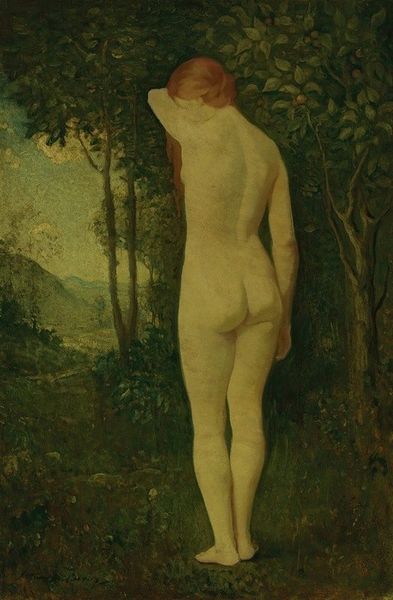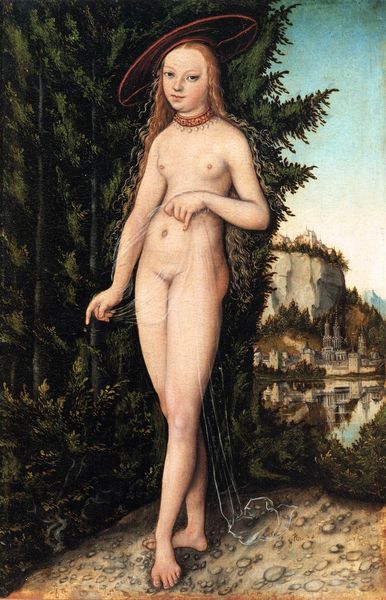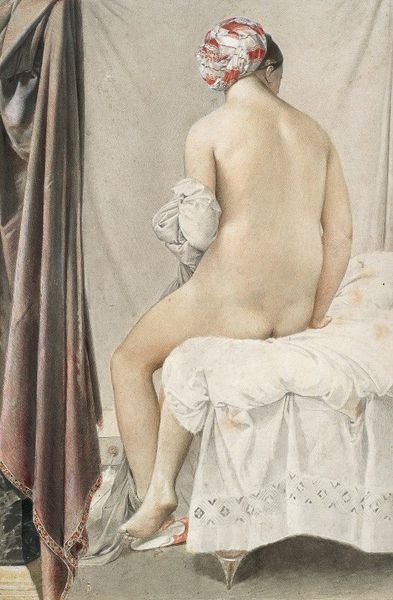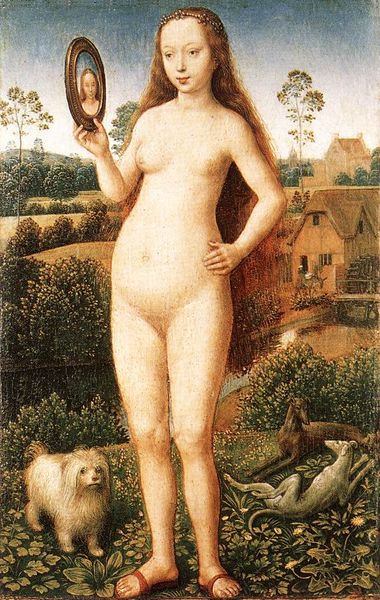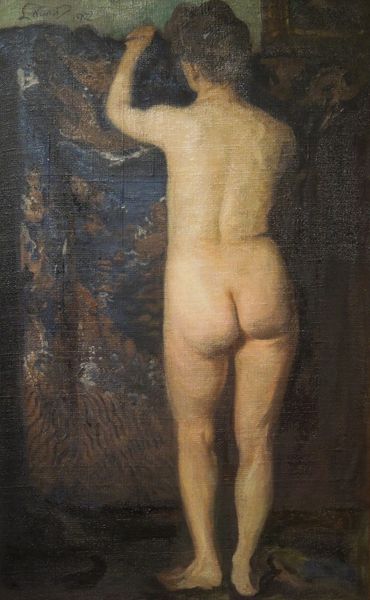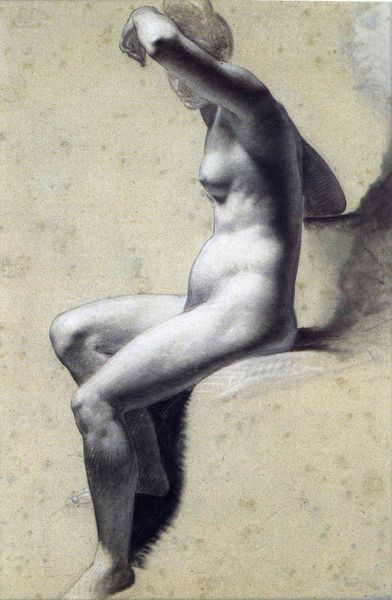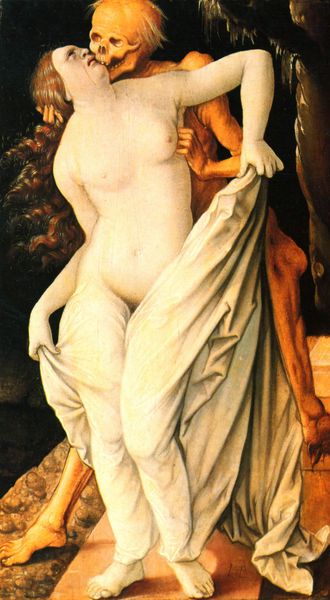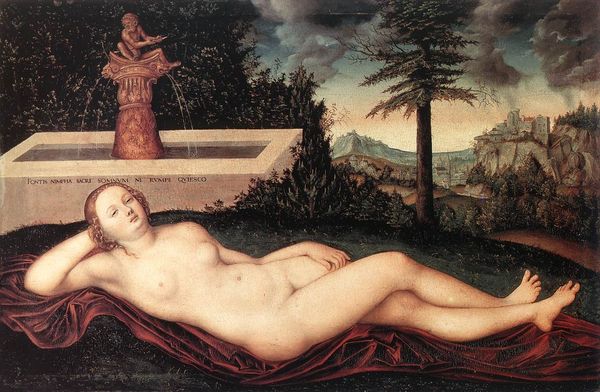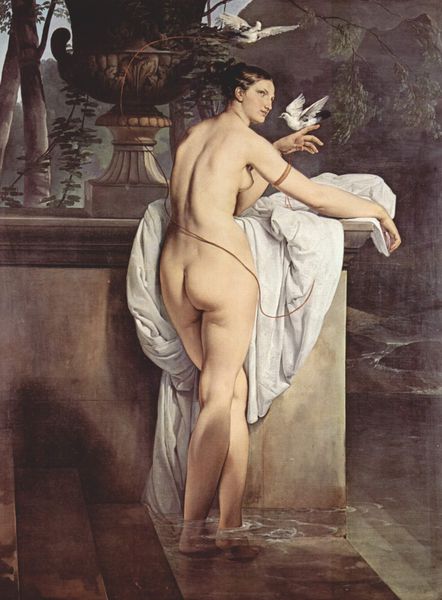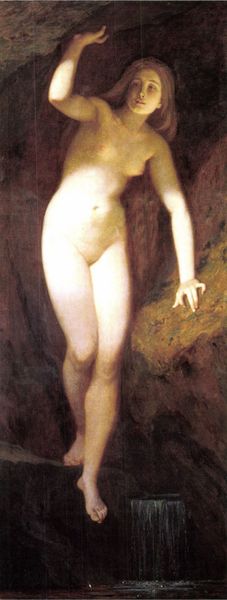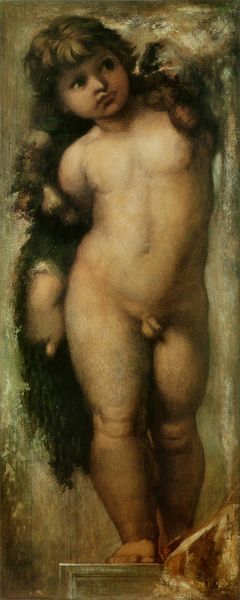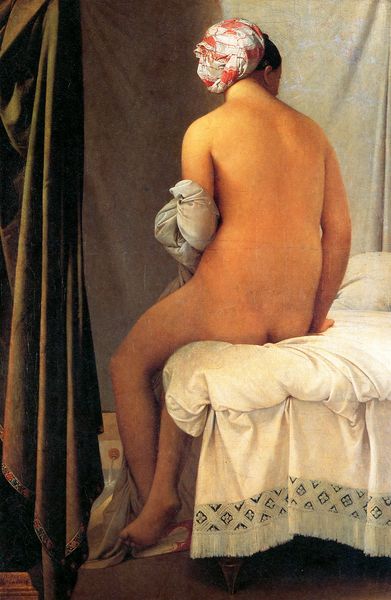
painting, oil-paint
portrait
painting
oil-paint
figuration
11_renaissance
oil painting
roman-mythology
mythology
human
history-painting
italian-renaissance
nude
portrait art
Dimensions: 745 x 545 cm
Copyright: Public domain
Curator: This is "Ceres," a painting made around 1510 by Giorgione. It’s rendered in oil paint and presents a compelling figure from Roman mythology. Editor: The first thing that strikes me is the pensive mood, a quiet melancholy that pervades the whole image. There is the somber palette, as well as the rather enigmatic gaze into the distance. Curator: Giorgione has masterfully interwoven symbolic layers. Ceres, the Roman goddess of agriculture, sits in what looks like partial ruins with the background showing some type of gathering or travel.. Her positioning near the ram head iconography suggests the significance of the agricultural cycle and the transition through different periods. The wheat in her hand is rather iconic. Editor: That positioning near the ruined wall is an interesting detail. Is the presence of Ceres within a decaying architecture meant to signal a society’s reliance on nature or some cultural anxiety about that relationship? What exactly might audiences at the time have understood? Curator: Consider Ceres as more than just the goddess of agriculture. Think of her as a guardian of cultural memory – she ensures the world cycles through continuity, memory, even renewal, despite the ruins around her. It is more cyclical than it is static and dying, I believe. That ram symbol reinforces that cyclical notion. Editor: I can see that. And what about the unusual treatment of the nude figure itself? She’s seated, not idealized in the classical heroic form, which suggests maybe something to do with the decline of institutions in Venetian life at the time, what do you think? Is it simply the goddess in contemplation? Curator: She represents, also, more simply put, fertility and nurturance in any age, though maybe the specific details get tweaked by changing cultural values. Maybe a decline, as you say. She sits there holding stalks of wheat – which also may point to her responsibility to secure sustenance and well-being; I think a generalized image helps this work transcend temporality. Editor: These ideas certainly help articulate the visual politics at play here. Giorgione’s goddess resonates even today. Curator: Yes, he does that, and his work offers timeless psychological insights—especially on cultural continuity and identity through iconic symbols.
Comments
No comments
Be the first to comment and join the conversation on the ultimate creative platform.
